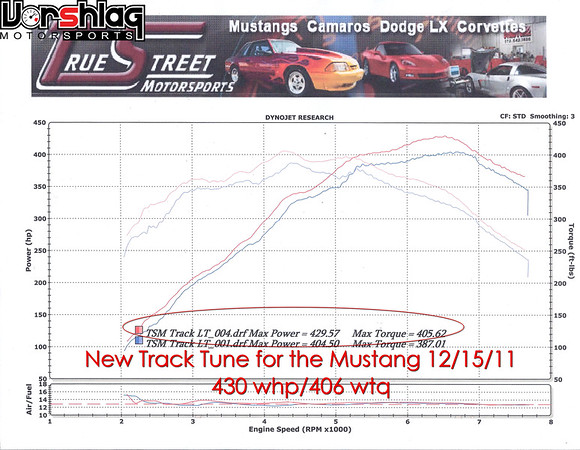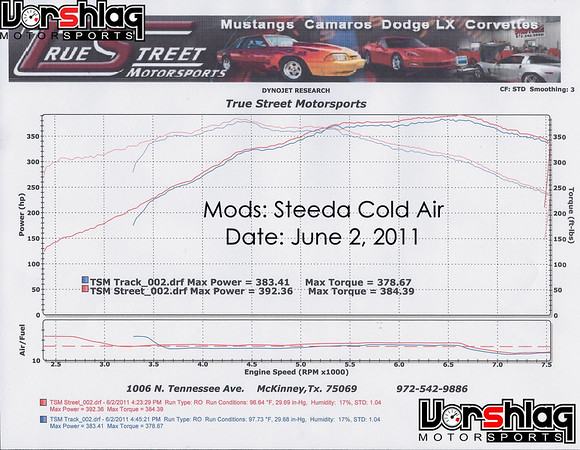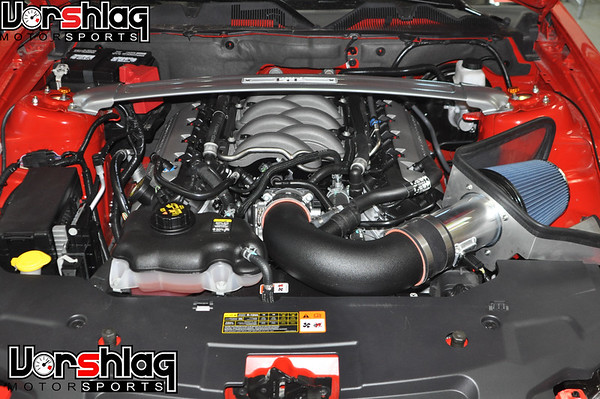Terry, did you try the Ford Racing tune? I'm very happy with the throttle map.
Hmm, I might have? I don't recall specifically. the Ford Tune is probably very conservative, to make it warranty friendly, but I suspect they will do that tuning trick of the ramped throttle map to make it "Feel fast". I cannot say for sure, of course, as I'm not a tuner and don't look at the 1s and 0s in any tuning map.
And to others that asked, I'm not saying DON'T get a tune on your Coyote 5.0, no. No, I actually highly
encourage folks that track their cars to get a CUSTOM DYNO TUNE on even mildly modded motors. And make sure you can work with the tuner DIRECTLY, not over e-mail or remotely. Tell them you want the following:
1. Don't alter the stock throttle mapping. Describe to them that you want a direct linear relationship between the pedal inputs and the throttle opening angle. Explain that you want this for the best throttle control, not some fake over-amped "feel".
2. Ask for a dyno tune that keeps the air:fuel ratio and timing curves in a
VERY SAFE and conservative zone for the fuel you use. If you tell them to tune it to 93 octane, ONLY USE 93 OCTANE. If you have only 91 octane in your areas, tell them that and bring the car filled with the same type of fuel you will track with.
3. Tweak the rev limit, if that helps you for your form of motorsport. We used to run a 7850 rpm redline for autocross use, as it gave us a few more mph in 2nd gear (to avoid lots of 2-3 shifts). Admittedly that was in the Danger Zone and it only ever saw that on rare occasions when the autocross course had a straight in the 70-72 mph range. Now we have it set at 7500, but I shift the motor on track at 7000 (and sometimes I will short shift below that, if the corner/straight doesn't allow full throttle use or the full rev range use). Know that a higher rev limit than stock (which is 6850 or so?) will shorten the lifespan of valvesprings and other engine parts.
For track use look at the car's actual power curve and add a few hundred rpms above the peak power number and make that your shift point, and a couple hundred above that your redline. If it peaks at 6600 rpm, set your shift point at 7000 or 7100, and redline 100 rpms above that.
Nothing can screw up an engine faster than a sh!tty tune. Most of the email/remote tunes are suspect, especially if it is a shop boasting the "most power" in their tunes. You DON'T want the most powerful tune, because that is usually on the ragged edge of engine death. An air:fuel ratio of 12.5:1 is safe, but if it touches 14:1 then that is not safe. The leaner the tune, the less safe it is on track. The more aggressive the timing curve, the less safe it is on track. It isn't worth 2 or 3 horsepower to have your engine blow up. I am probably giving up 5-8 whp with the tune I asked for (conservative!) but after 4 seasons the stock engine is still running strong and we've had zero issues with it.
Every major metropolitan market has a good tuner shop around - just ASK. And if you are a track guy, don't ask your drag racer friends, ask your
track friends who can do a safe and competent track tune. Almost any bolt-on engine part means you should probably get a new tune. An aftermarket cold air? Get a custom tune. A set of headers? Get a custom tune. Cams or head work? Obviously. And if you can BUY the handheld tuner from your actual tuning shop (SCT, etc), they will appreciate the business and usually discount the dyno tune as well. KEEP IT LOCAL, buy the parts you need for the shop doing the work.
And ask about a "lifetime" tune, which usually includes free or radically reduced priced re-tunes at a later date when you make more parts changes and need a check-up. The shop we use,
True Street Motorsports, has a deal like that and for a re-tune or annual check-up we just pay for dyno time, not the full "custom tune" costs.
I personally know too many folks that have lost 5.0 motors due to lean out/detonation issues cracking pistons and ring lands, usually on cylinder 7 and 8. They all had mail order tunes on their cars. This becomes an expensive mistake - pay for a real dyno tune, as that is good insurance.

Another good procedure to follow is to have a "dyno check-up" done every season (once every 12 months). Just ask for a couple of pulls and for them to monitor OBDII data for knock and to check air:fuel ratios. If there is a problem with the engine, a sensor, or the tune it will jump out at them. If the power is down somewhere, you can SEE it, then try to figure out why. And each time I get a retune from a parts change I ask them to also show the previous best dyno pull from before. That's what's going on in these attached dyno sheet images... the previous best is there in another color so I can see where the power and torque curves changed. So far each step has been in the right direction and we've added not only TOP end power but maintained and even beefed up LOW and MID range power as well. If you aren't a drag racer, low and mid range power DOES matter, as you can't always be in the optimal RPM range for the best power curve on every corner of every track. Autocrossers especialy should look for LOW rpm power, as it helps you dig out of low speed corners.

Anyway, that's my theory. I'm NOT an engine tuner but I understand what they do, and it is a valuable skill. Everyone that tracks whatever car should find a reputable tuner shop in their area familiar with the type of computer/engine they have and get their car dyno'd to see what's up.
Cheers,











